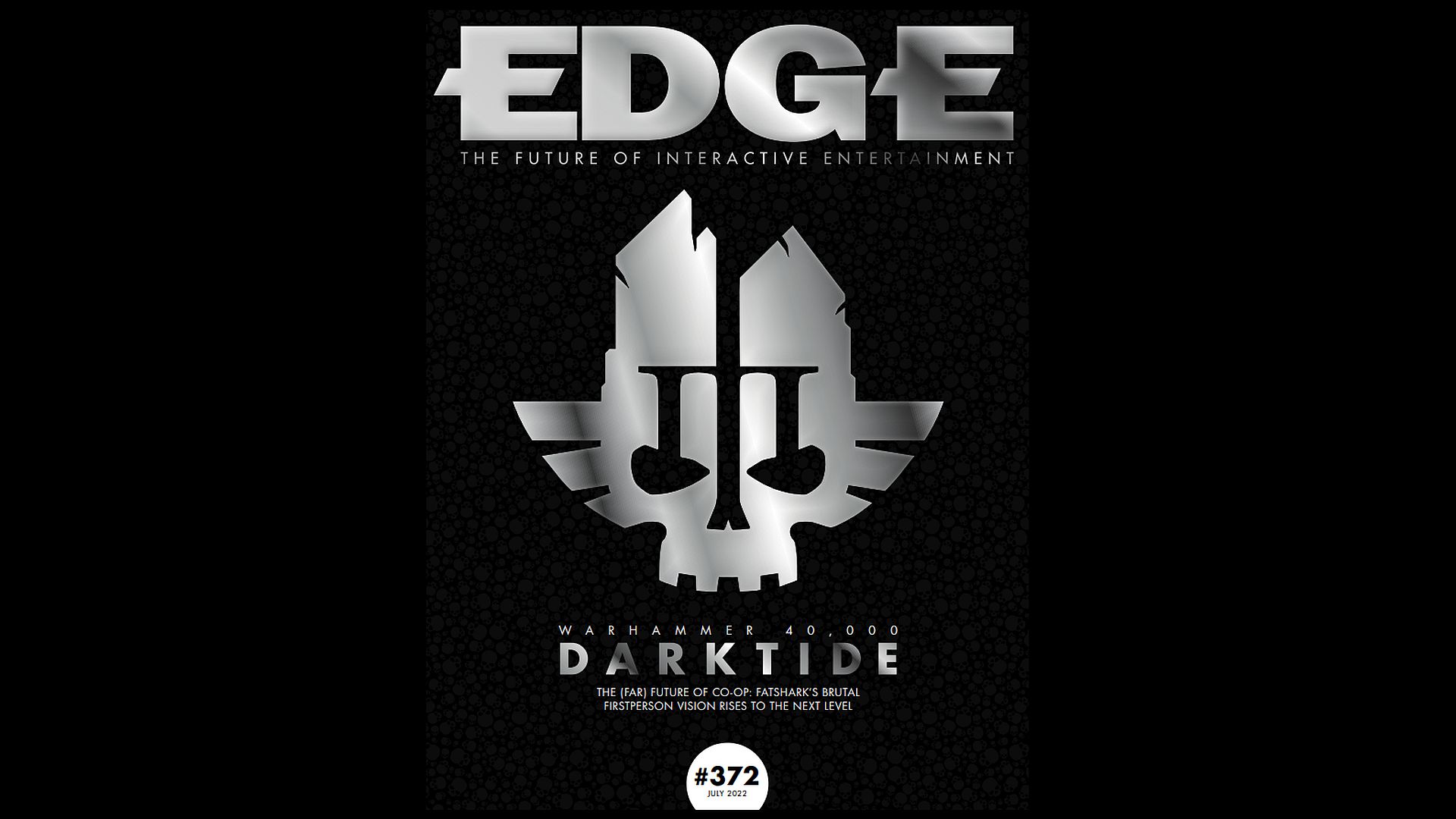Making waves: Fatshark takes Vermintide’s co-op horde action to the next level in Edge 372 with Warhammer 40,000: Darktide
“You need to rely on others to make it through, because our games are not cooperative as an option.”

If the devil is in the details, then Warhammer 40,000: Darktide is positively Mephistophelian. Fatshark’s firstperson vision of this beloved world has been fleshed out to an unprecedented degree. “There are biographies for places you spend ten seconds walking down,” writer Dan Abnett says. “I think we’re trying too hard.”
Indeed, that level of investment in storytelling extends to the dialogue system: significantly more complex and expansive than its predecessor, it already boasts 75,000 written lines with the promise of more to come. But that’s crucial in a game designed to be replayed, with each new visit offering you fresh glimpses into the world, even if it’s just a change of terminology – a single street, for example, might go by four different titles while locals have their own names for certain landmarks. You might think much of this is beside the point in a game that’s largely about brutalising hordes of enemies alongside a few friends, but it’s testament to the richness of Fatshark’s intoxicating take on Warhammer: a world, lest we forget, that is more traditionally viewed from above.
One key point of difference from the much-loved Darktide is the absence of preset classes. Rather, you’ll create your own hero – though that’s perhaps not quite the right word for a character recruited into the service of an Inquisitor via a prison vessel. You’re meat for the grinder, in other words, but assuming you survive these deadly missions you will steadily rise through the ranks. Though your personal progress depends on working alongside others: failing to stick together when faced with legions of pox walkers, cultists and the occasional Chaos Hound, and all four players can expect a one-way trip to the game over screen.
There’s much more to discover in our extensive cover feature, as we investigate what makes Darktide tick: you’ll find out which weapon is “the ultimate version of the killshot experience” and how the game’s story will develop post-launch. And while we’re on a multiplayer tip, elsewhere in E372 we dissect the rise and fall of splitscreen gaming, talking to the hobbyists who are doing their level best to prevent it from fading away.
There is, of course, plenty for the solo player. Legendary designer Hiroyuki Ito tells us the story behind the metaphorical mountain climb that is Dungeon Encounters, while in Time Extend we fall back into the tentacular embrace of Return Of The Obra Dinn. And for this issue’s Studio Profile we catch up with Mobius Digital to find out how the developer is planning on following up the modern masterpiece that is Outer Wilds.
It’s a packed review section this issue, too, as we run the rule over Nintendo Switch Sports, Rogue Legacy 2, Teardown, Citizen Sleeper, The Stanley Parable: Ultra Deluxe and more. The same goes for Hype, where we look forward to The Quarry, Nine Sols, Lego Bricktales and Cult Of The Lamb. And we also look back, reflecting upon two decades of Ludum Dare and the remarkable impact the game-jam event has had on the industry. All this and much more can be found in Edge 372, which is on sale now.
Weekly digests, tales from the communities you love, and more
Edge magazine was launched in 1993 with a mission to dig deep into the inner workings of the international videogame industry, quickly building a reputation for next-level analysis, features, interviews and reviews that holds fast nearly 30 years on.



